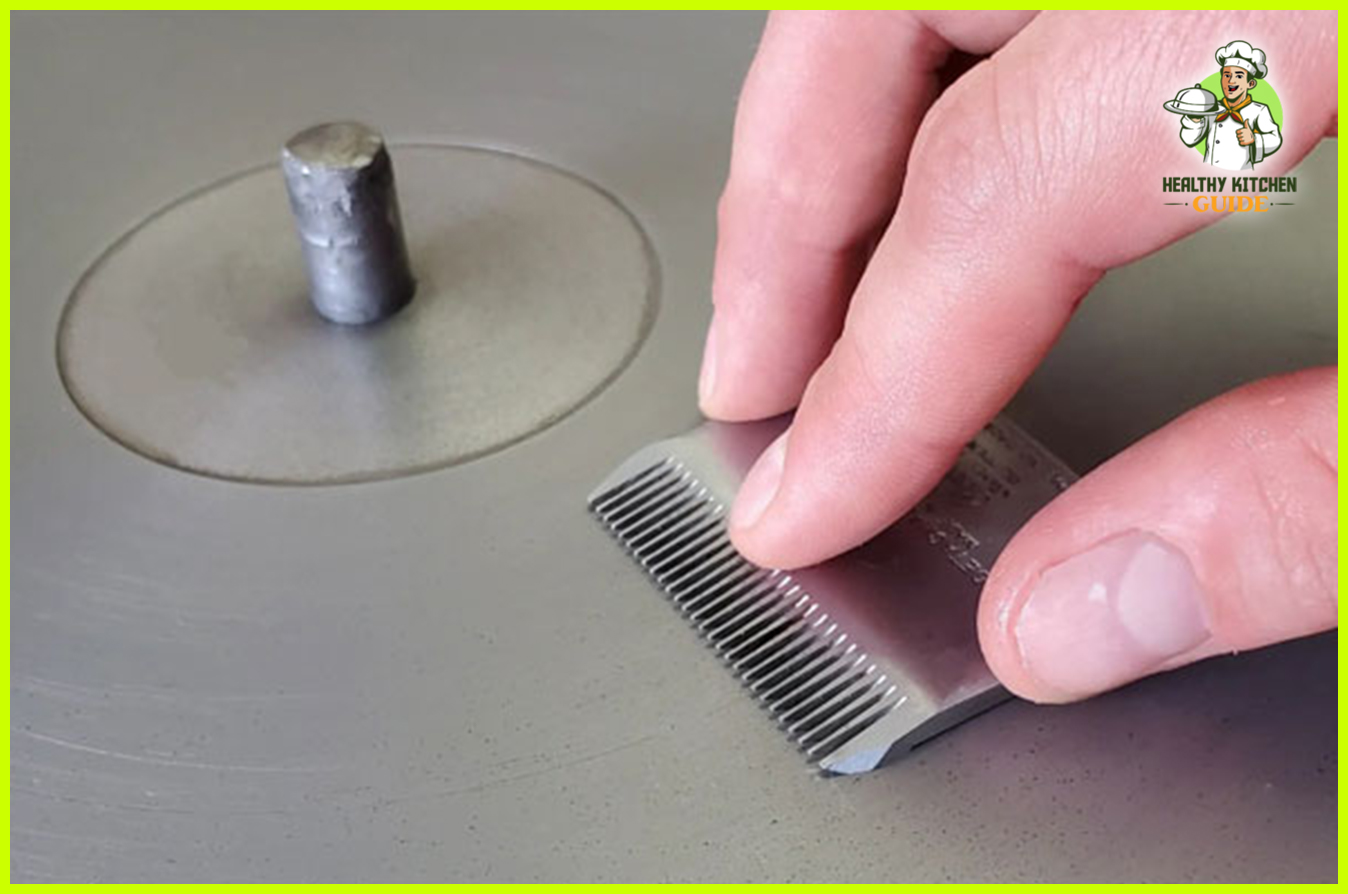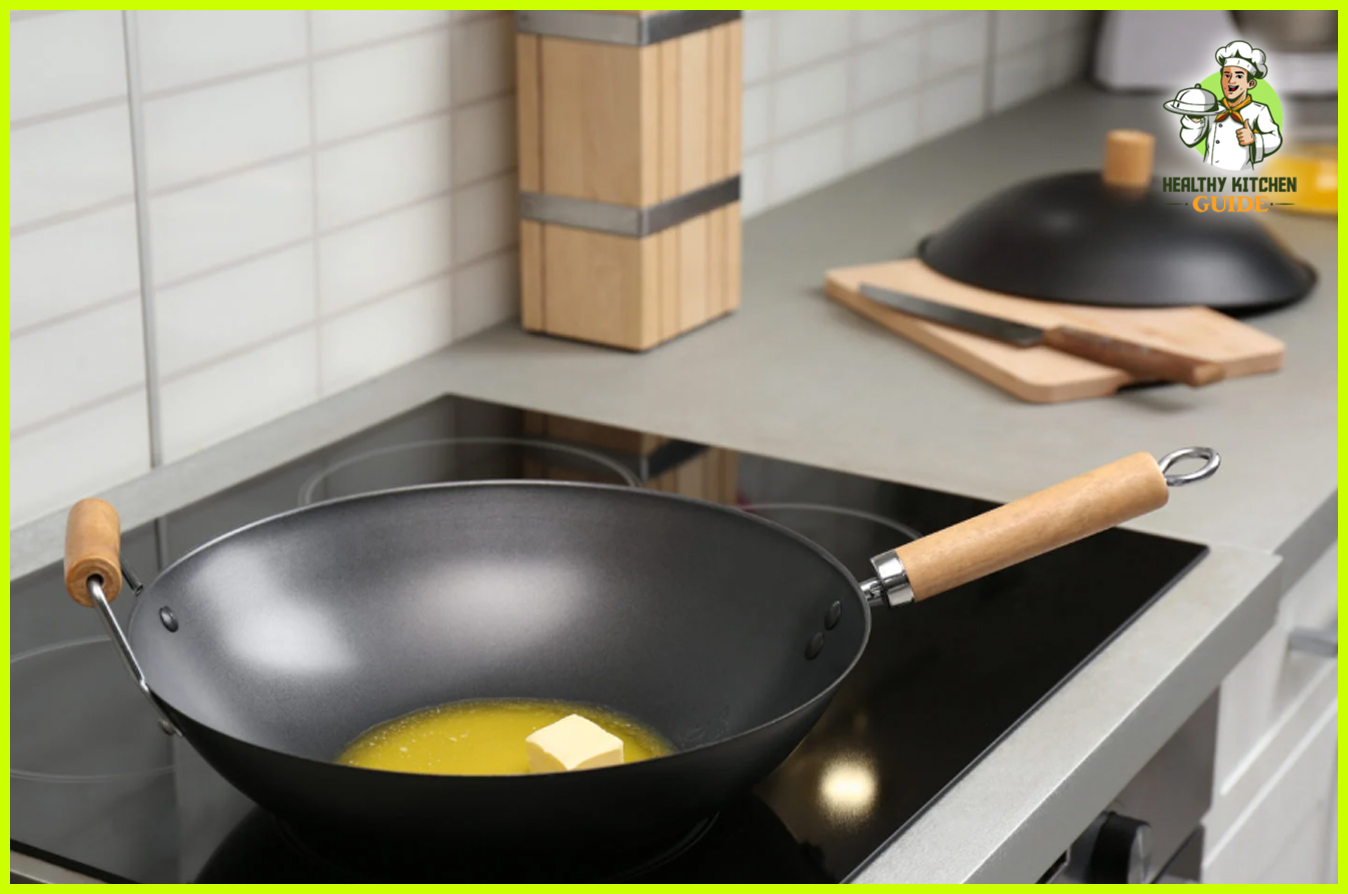To shred cabbage with a knife, first remove any tough outer leaves. Then, cut the cabbage into thin, even slices using a sharp chef’s knife.
Introducing some delicious homemade coleslaw or a crispy cabbage salad into your meal is always a refreshing idea. But before you dive into these dishes, you’ll need to shred some cabbage. While a food processor or mandoline can make the task more efficient, not everyone has access to these appliances.
But fear not, because you can still achieve finely shredded cabbage using a trusty knife. In this guide, we will walk you through the simple steps of how to shred cabbage with a knife, ensuring your next meal is packed with tasty and nutritious cabbage goodness. So let’s jump straight into it!
The Basics Of Shredding Cabbage With A Knife
The Basics of Shredding Cabbage with a Knife:
When it comes to shredding cabbage, choosing the right knife is essential. There are several types of knives that can be used for this task, each with its own benefits. A traditional chef’s knife works well for most cabbage shredding tasks, as its sharp blade allows for precise and efficient cutting. For more delicate tasks, such as shredding cabbage for coleslaw or salads, a santoku knife with its smaller, thinner blade can offer more control.
Proper techniques for slicing and dicing cabbage are also important to achieve the desired results. Start by removing the outer leaves and rinsing the cabbage thoroughly. Cut the cabbage in half, and then cut out the core. From there, you can start shredding the cabbage by slicing it into thin strips. Take care to keep your fingers away from the sharp edge of the knife and maintain a steady cutting motion.
Choosing The Right Knife For Shredding Cabbage
When it comes to shredding cabbage, choosing the right knife is crucial. A good cabbage-shredding knife should possess certain characteristics for effective and efficient cabbage preparation. Firstly, the blade should be sharp and sturdy, allowing for smooth and easy slicing through the dense cabbage leaves. Additionally, the knife should have a long, thin blade to create fine and uniform shreds. Moreover, a handle with a comfortable grip is essential to minimize hand fatigue during the shredding process. The types of knives commonly used for shredding cabbage include the chef’s knife, the Santoku knife, and the Chinese cleaver. Each knife offers its own advantages and preferences, so it is important to try out different types to find the one that suits you best. Investing in a high-quality cabbage-shredding knife will undoubtedly make the task easier and more enjoyable, resulting in perfectly shredded cabbage for your favorite recipes.
Mastering The Slice And Dice Technique For Shredding Cabbage
Shredding cabbage can seem like a daunting task, but with a little practice and the right technique, you can easily achieve consistent and uniform cuts. Follow these step-by-step instructions:
- Remove the outer leaves of the cabbage and rinse it well.
- Cut the cabbage in half and place one half on a cutting board, flat side down.
- Slice off the core of the cabbage with a sharp knife.
- Starting from one end, make thin slices across the cabbage using a back-and-forth motion.
- Continue slicing until you reach the other end of the cabbage.
- Repeat the process with the other half of the cabbage.
To achieve consistent and uniform cuts, make sure to maintain a steady grip on the knife and apply even pressure while slicing. Be cautious and focus on your technique to prevent any accidental slips.
Once you’ve mastered the slice and dice technique, you’ll be able to efficiently shred cabbage for your favorite recipes, including coleslaw, salads, and stir-fries.
Safety Measures When Shredding Cabbage
- Make sure to follow these safety tips to avoid injuries while using a knife:
- Proper hand placement and grip: Position your hand away from the blade while keeping your fingers curled. This will prevent accidental cuts if the knife slips.
- Maintain a stable cutting surface: Ensure that your cutting board is secure and won’t move while you are shredding the cabbage. It is recommended to place a damp cloth underneath to prevent slipping.
- Use a sharp knife: A dull knife requires more force to cut through cabbage, increasing the risk of accidents. Keep your knife sharp and well-maintained.
- Be mindful of distractions: Avoid multitasking or working in a crowded space. Focus solely on the task at hand to reduce the chances of accidents.
Enhancing The Flavor And Texture Of Shredded Cabbage
Shredded cabbage is a versatile ingredient that can be used in a variety of dishes, from salads to stir-fries. To elevate the taste and texture of your shredded cabbage, there are a few methods you can try.
- Massage the cabbage: Before shredding, take a few minutes to massage the cabbage with a pinch of salt. This process helps to break down the fibrous texture of the cabbage, resulting in a more tender and flavorful end product.
- Add vinegar or citrus juice: Acidic ingredients like white vinegar or lemon juice can brighten the flavor of shredded cabbage. Toss the shredded cabbage in a mixture of vinegar or citrus juice for a tangy twist.
- Hand-shred with a knife: Use a sharp knife to thinly slice the cabbage into fine shreds. This method allows you to control the size and texture of the pieces, resulting in a more consistent and visually appealing dish.
- Use a mandoline or grater: If you prefer a finer texture, a mandoline or grater can be used to shred the cabbage into thin ribbons. This method is particularly useful when making coleslaw or adding cabbage to sandwiches.
Experiment with these techniques and methods to create the perfect shredded cabbage for your next meal. Whether you’re adding it to a salad or using it as a topping for tacos, these tips will help enhance both the flavor and texture of your shredded cabbage.
Adding Flavorful Ingredients To Shredded Cabbage
Enhancing the taste of shredded cabbage can be achieved by incorporating flavorful herbs, spices, and complementary vegetables. To add a burst of flavor, try using herbs such as dill, parsley, and cilantro. These herbs not only bring freshness but also impart a unique taste to the shredded cabbage. Spices like cumin, paprika, and garlic powder can also be used to add a hint of warmth and depth to the dish.
To achieve a balanced and harmonious flavor, consider incorporating complementary vegetables such as carrots, bell peppers, and onions. These vegetables not only add crunch but also impart their own distinct flavors to the dish. Combining sweet and tangy elements, such as apple cider vinegar or lemon juice, can further enhance the overall taste of the shredded cabbage.
Experimentation is key when it comes to adding flavor to shredded cabbage. By trying out different combinations of herbs, spices, and complementary vegetables, you can create a variety of delicious dishes that showcase the versatility of this humble vegetable.
Achieving The Perfect Texture In Shredded Cabbage
When it comes to achieving the perfect texture in shredded cabbage, the cutting technique plays a crucial role. By using the right cutting techniques, you can ensure that your cabbage is crunchy and crisp, adding a delightful texture to your dishes.
One of the key tips for achieving a crunchy and crisp texture is to slice the cabbage into thin, uniform strips. This can be done by using a sharp knife and cutting the cabbage into quarters, removing the core, and then thinly slicing the leaves.
Another technique that can contribute to the texture modification of shredded cabbage is cross-chopping. By cutting the cabbage in a crisscross pattern, you can create smaller, more bite-sized pieces that offer a unique texture.
By paying attention to the cutting techniques and opting for thin, uniform slices or cross-chopped pieces, you can achieve the perfect texture in your shredded cabbage dish. So, grab a sharp knife, follow these tips, and elevate your cabbage shredding game!
Creative Uses For Shredded Cabbage
Shredded cabbage is a versatile ingredient that can be used in a variety of recipes to add crunch and flavor. This humble vegetable can be transformed into delicious and nutritious meals with a few simple steps. One innovative way to incorporate shredded cabbage is by making coleslaw. Mix the cabbage with a tangy dressing made from mayonnaise, vinegar, and spices for a refreshing side dish. Another option is to sauté the shredded cabbage with garlic and olive oil for a quick and healthy stir-fry. Additionally, you can use shredded cabbage as a topping for tacos or sandwiches, adding a satisfying crunch to every bite. Apart from these options, shredded cabbage can also be added to soups, salads, or even used as a base for cabbage rolls. The possibilities are endless!
Exploring Versatile Recipes Using Shredded Cabbage
If you’re looking to get creative in the kitchen, there are countless recipes that showcase the versatility of shredded cabbage. One popular dish is cabbage rolls, where the cabbage leaves are used as a wrapper for a flavorful filling such as ground meat and rice. Another option is to make cabbage pancakes by mixing shredded cabbage with flour, eggs, and seasoning, then frying them until golden and crispy. Shredded cabbage is also a fantastic addition to Asian-inspired dishes like stir-fried noodles or spring rolls. For a healthier option, consider making a shredded cabbage salad with a tangy vinaigrette dressing. The crispiness of the cabbage pairs well with the acidity of the dressing, creating a refreshing and satisfying salad. No matter how you decide to use shredded cabbage, you’re sure to create a delicious and nutritious meal!
Classic Dishes Featuring Shredded Cabbage
Classic dishes featuring shredded cabbage are popular in many cuisines around the world. From coleslaw to sauerkraut, cabbage is a versatile ingredient that adds flavor and texture to a variety of recipes.
In Asian cuisine, cabbage is commonly used in stir-fries and spring rolls. In Chinese cuisine, Hakka-style fried rice with shredded cabbage is a popular dish. In Korean cuisine, kimchi made from shredded cabbage and other vegetables is a staple side dish.
Eastern European cuisine also features dishes that incorporate shredded cabbage. Polish cabbage rolls, known as golabki, are made by rolling ground meat with seasoned rice in cabbage leaves. In Russian cuisine, cabbage is often used in borscht, a hearty beet soup.
In conclusion, shredded cabbage is a versatile and delicious ingredient that can be used in a wide range of traditional recipes from different cultures. Whether you’re making coleslaw, sauerkraut, or exploring other cabbage-based dishes, using a knife to shred cabbage is a simple and effective method.
Unexpected Uses For Shredded Cabbage
Shredded cabbage goes far beyond the confines of traditional coleslaw. Its crunchy and versatile nature makes it a great addition to a variety of dishes. Here are some creative and unconventional recipes that incorporate shredded cabbage:
- Cabbage Tacos: Swap out the traditional tortilla with cabbage leaves to create a healthier and gluten-free alternative. Fill them with your favorite protein, veggies, and toppings for a satisfying and low-carb meal.
- Cabbage Stir-Fry: Add shredded cabbage to your stir-fries for an extra crunch and a boost of nutrients. It pairs well with a variety of proteins and other vegetables, creating a colorful and flavorful dish.
- Cabbage Wraps: Use cabbage leaves as a substitute for wraps in sandwiches or burgers. The sturdy leaves provide a great vessel for holding fillings such as grilled chicken, avocado, and other fresh ingredients.
- Cabbage Sliders: Form mini cabbage “buns” by shaping shredded cabbage into small patties. Use them as a base for sliders filled with your choice of protein and condiments.
- Cabbage Salad Rolls: Roll up shredded cabbage, along with other vegetables and proteins, in rice paper to create vibrant and refreshing salad rolls. Serve with a tasty dipping sauce for added flavor.
These unexpected uses for shredded cabbage can inspire you to think outside the coleslaw box and experiment with incorporating this nutritious vegetable into various cuisines. Get creative in the kitchen and enjoy the versatility of shredded cabbage!
Troubleshooting And Tips For Shredding Cabbage
Discover expert troubleshooting tips for shredding cabbage with a knife for delicious coleslaw and recipes. Learn the proper technique, knife selection, and handy tips for efficient cabbage shredding in your kitchen.
Common Problems Encountered When Shredding Cabbage
Shredding cabbage can be a bit challenging, but with these practical tips, you can master the art of cabbage shredding:
- Size Matters: One common issue is ending up with unevenly shredded cabbage. To avoid this, ensure you cut the cabbage into small, manageable pieces.
- Sharp Knife: Using a sharp knife is crucial for achieving neat and clean cuts. Dull knives can tear the leaves instead of cutting them smoothly.
- Technique: Proper technique is vital for efficient cabbage shredding. Hold the knife at a slight angle and use a sawing motion to cut through the cabbage with ease.
- Uniformity: To achieve uniform shreds, try to cut the cabbage into similar-sized blocks. This will make it easier to create consistent shreds.
- Patience: Take your time and shred the cabbage slowly and deliberately. Rushing may result in uneven or messy cuts.
Dealing With Tough Cabbage Leaves
Shredding cabbage with a knife can be a challenging task, especially when dealing with tough cabbage leaves. Techniques that can help soften these leaves include blanching, salting, and massaging.
Blanching involves briefly boiling the cabbage leaves in salted water to help soften them. This can be done by bringing a large pot of water to a boil, adding salt, and placing the leaves in the boiling water for about 1-2 minutes. After blanching, the leaves should be immediately transferred to an ice bath to stop the cooking process.
Another method is salting, which involves sprinkling the cabbage leaves with salt and allowing them to sit for about 10-15 minutes. This process draws out excess moisture and helps to tenderize the leaves. Once the cabbage leaves have softened, they can be rinsed and patted dry before shredding.
Massaging the cabbage leaves can also be effective in softening tough leaves. By firmly rubbing and kneading the leaves with your hands, you can break down their fibrous structure and make them more pliable for shredding.
Whichever technique you choose, it’s important to remember that sharp knives and proper cutting techniques are essential for achieving smooth and even cuts. To ensure safety and precision, always use a sharp chef’s knife and hold it at a slight angle while slicing the cabbage.
Preventing Cabbage From Turning Brown
When shredding cabbage with a knife, it’s important to prevent it from turning brown. Shredded cabbage can quickly lose its vibrant color and fresh appearance if not handled properly. To keep shredded cabbage fresh and vibrant, there are a few methods you can try.
1. Blanching: Before shredding the cabbage, blanch it in boiling water for a minute or two. This will help lock in the color and prevent browning.
2. Vinegar Solution: Another method is to soak the shredded cabbage in a vinegar solution. Mix one part vinegar with three parts water and soak the cabbage for a few minutes. The acidity of the vinegar helps preserve the color.
3. Citrus Juice: Squeezing some lemon or lime juice over the shredded cabbage can also help prevent browning. The acidic nature of citrus juice acts as a natural preservative.
Remember to handle the cabbage gently when shredding to avoid bruising and excessive damage. Additionally, storing the shredded cabbage in an airtight container in the refrigerator can also help preserve its freshness and color.
Frequently Asked Questions On How To Shred Cabbage With A Knife
How Do You Shred Cabbage With A Knife?
To shred cabbage with a knife, start by removing the core, slice the cabbage thinly, and then cut the slices into smaller shreds.
What Type Of Knife Is Best For Shredding Cabbage?
A sharp chef’s knife or a large cleaver is ideal for shredding cabbage, as their wide blades make it easier to slice through the thick leaves.
Can You Shred Cabbage Without A Shredder?
Yes, you can shred cabbage without a shredder by simply using a knife to slice it thinly. It may take a bit more time and effort, but it is certainly possible.
How Do You Avoid Cutting Yourself While Shredding Cabbage?
To avoid cutting yourself while shredding cabbage, make sure to keep your fingers tucked in and away from the knife blade, and use a stable cutting board to provide a secure surface.
What Can I Use Shredded Cabbage For?
Shredded cabbage can be used in a variety of dishes, such as coleslaw, stir-fries, salads, soups, and even as a topping for tacos or sandwiches.
How Long Does Shredded Cabbage Last In The Fridge?
When stored properly in an airtight container, shredded cabbage can last for up to 5-7 days in the fridge, remaining fresh and crisp for use in your recipes.
Conclusion
Shredding cabbage with a knife may seem daunting at first, but with the right technique, it becomes a simple and efficient process. By following these step-by-step instructions, you can easily achieve evenly shredded cabbage for your favorite coleslaw or stir-fry recipes.
So, next time you’re in the kitchen, grab a sharp knife and confidently shred that cabbage with ease. Happy cooking!




Leave a Reply